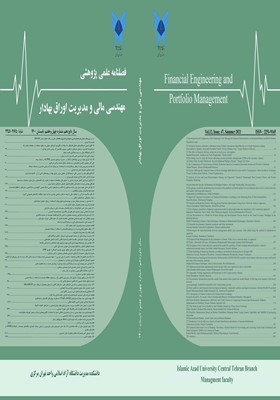Analysis of Cost and Asset Retrenchment Strategy on Corporates’ Financial Turnaround: Rent Creation Theory and System Dynamics Modeling
Subject Areas : Financial engineering
Mostafa Beheshti Seresht
1
![]() ,
Mohammad Ali Dehghan Dehnavi
2
,
Ali Naghi Mashayekhi
3
,
Meysam Amiry
4
,
Mohammad Ali Dehghan Dehnavi
2
,
Ali Naghi Mashayekhi
3
,
Meysam Amiry
4
1 - Department of Finance and Banking, Faculty of Management and Accounting, Allameh Tabataba'i University, Tehran, Iran.
2 - Department of Finance and Banking, Faculty of Management and Accounting, Allameh Tabataba'i University, Tehran, Iran.
3 - Department of Management, Faculty of Management and Economics, Sharif University of Technology, Tehran, Iran.
4 - Department of Finance and Banking, Faculty of Management and Accounting, Allameh Tabataba'i University, Tehran, Iran.
Keywords: System Dynamics, Financial Distress, financial turnaround, Retrenchment Strategy, Rent Creation Theory,
Abstract :
Cost and asset retrenchment strategy is one of the most common financial turnaround strategies followed by the firms facing performance decline and financial difficulties. In cost retrenchment, the main goal is to improve liquidity by reducing the cash outflow rate. In asset retrenchment, the first goal is to increase productivity through redeployment of assets and the second goal is to finance through the divestment of low-yield assets. Although this strategy has been considered by many researchers as a necessary and effective strategy in financial turnaround of the firms, the results of several empirical studies have shown in some cases this strategy is the cause of further decline and a barrier to financial turnaround. In this paper, we intend to show how the cost and asset retrenchment strategy affects Schumpeterian and Ricardian rent creation mechanisms in the firm, and to find the conditions under which it improves or deteriorates the effectiveness of financial turnaround, using the system dynamics modeling method.
_||_


